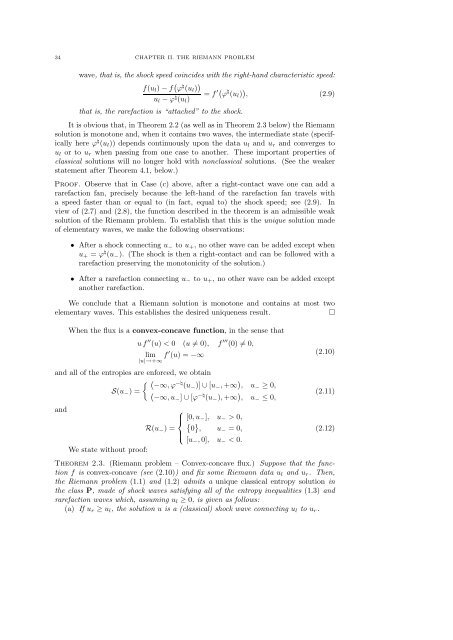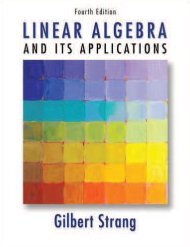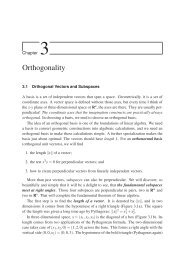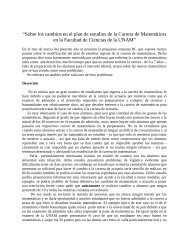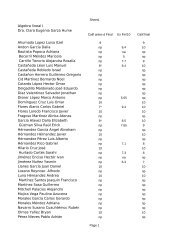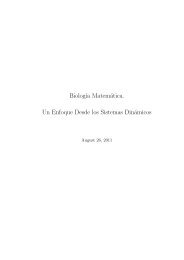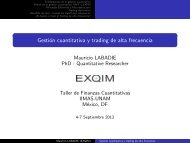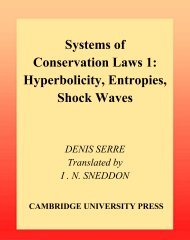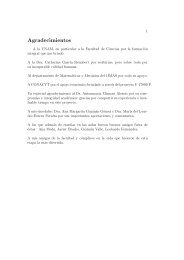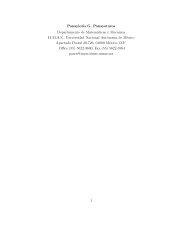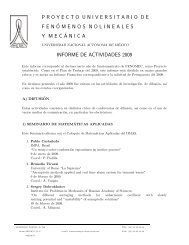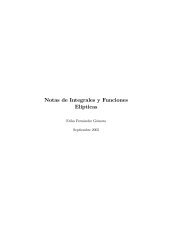Order Form - FENOMEC
Order Form - FENOMEC
Order Form - FENOMEC
You also want an ePaper? Increase the reach of your titles
YUMPU automatically turns print PDFs into web optimized ePapers that Google loves.
34 CHAPTER II. THE RIEMANN PROBLEM<br />
wave, that is, the shock speed coincides with the right-hand characteristic speed:<br />
f(u l ) − f ( ϕ ♮ (u l ) )<br />
u l − ϕ ♮ = f ′( ϕ ♮ (u l ) ) , (2.9)<br />
(u l )<br />
that is, the rarefaction is “attached” to the shock.<br />
It is obvious that, in Theorem 2.2 (as well as in Theorem 2.3 below) the Riemann<br />
solution is monotone and, when it contains two waves, the intermediate state (specifically<br />
here ϕ ♮ (u l )) depends continuously upon the data u l and u r and converges to<br />
u l or to u r when passing from one case to another. These important properties of<br />
classical solutions will no longer hold with nonclassical solutions. (See the weaker<br />
statement after Theorem 4.1, below.)<br />
Proof. Observe that in Case (c) above, after a right-contact wave one can add a<br />
rarefaction fan, precisely because the left-hand of the rarefaction fan travels with<br />
a speed faster than or equal to (in fact, equal to) the shock speed; see (2.9). In<br />
view of (2.7) and (2.8), the function described in the theorem is an admissible weak<br />
solution of the Riemann problem. To establish that this is the unique solution made<br />
of elementary waves, we make the following observations:<br />
• After a shock connecting u − to u + , no other wave can be added except when<br />
u + = ϕ ♮ (u − ). (The shock is then a right-contact and can be followed with a<br />
rarefaction preserving the monotonicity of the solution.)<br />
• After a rarefaction connecting u − to u + , no other wave can be added except<br />
another rarefaction.<br />
We conclude that a Riemann solution is monotone and contains at most two<br />
elementary waves. This establishes the desired uniqueness result.<br />
□<br />
When the flux is a convex-concave function, in the sense that<br />
uf ′′ (u) < 0 (u ≠0), f ′′′ (0) ≠0,<br />
lim f ′ (u) =−∞<br />
|u|→+∞<br />
and all of the entropies are enforced, we obtain<br />
{ (<br />
−∞,ϕ −♮ (u − )] ∪ [u − , +∞ ) , u − ≥ 0,<br />
S(u − )= (<br />
−∞,u− ] ∪ [ϕ −♮ (u − ), +∞ ) , u − ≤ 0,<br />
(2.10)<br />
(2.11)<br />
and<br />
⎧<br />
⎪⎨ [0,u − ], u − > 0,<br />
{ }<br />
R(u − )= 0 , u− =0,<br />
⎪⎩<br />
[u − , 0], u − < 0.<br />
We state without proof:<br />
(2.12)<br />
Theorem 2.3. (Riemann problem – Convex-concave flux.) Suppose that the function<br />
f is convex-concave (see (2.10)) and fix some Riemann data u l and u r . Then,<br />
the Riemann problem (1.1) and (1.2) admits a unique classical entropy solution in<br />
the class P, made of shock waves satisfying all of the entropy inequalities (1.3) and<br />
rarefaction waves which, assuming u l ≥ 0, is given as follows:<br />
(a) If u r ≥ u l , the solution u is a (classical) shock wave connecting u l to u r .


